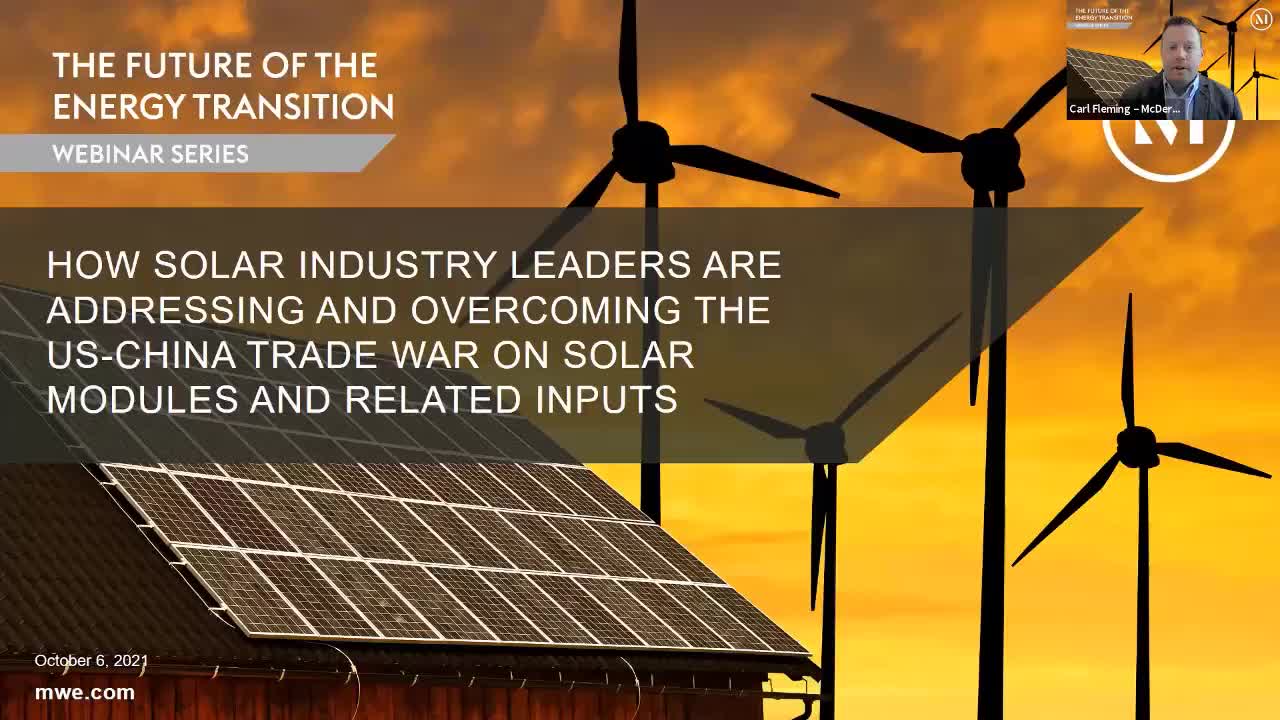The US Department of Commerce (Commerce) recently initiated a circumvention investigation against solar cell and module imports from Cambodia, Malaysia, Thailand and Vietnam. This decision has the potential to profoundly impact the companies that import or rely on imported crystalline silicon photovoltaic cells (CSPs) in the United States. To help companies navigate this investigation, McDermott’s Carl Fleming, Lynn Kamarck and Tyler Kimberly were joined by Brett White, vice president of regulatory affairs for Pine Gate Renewables, for a fireside chat that covered, among other things, the specific issues Commerce will investigate, how to assess the risk of this decision across developer portfolios and the opportunities presented for improving current renewables legislation.
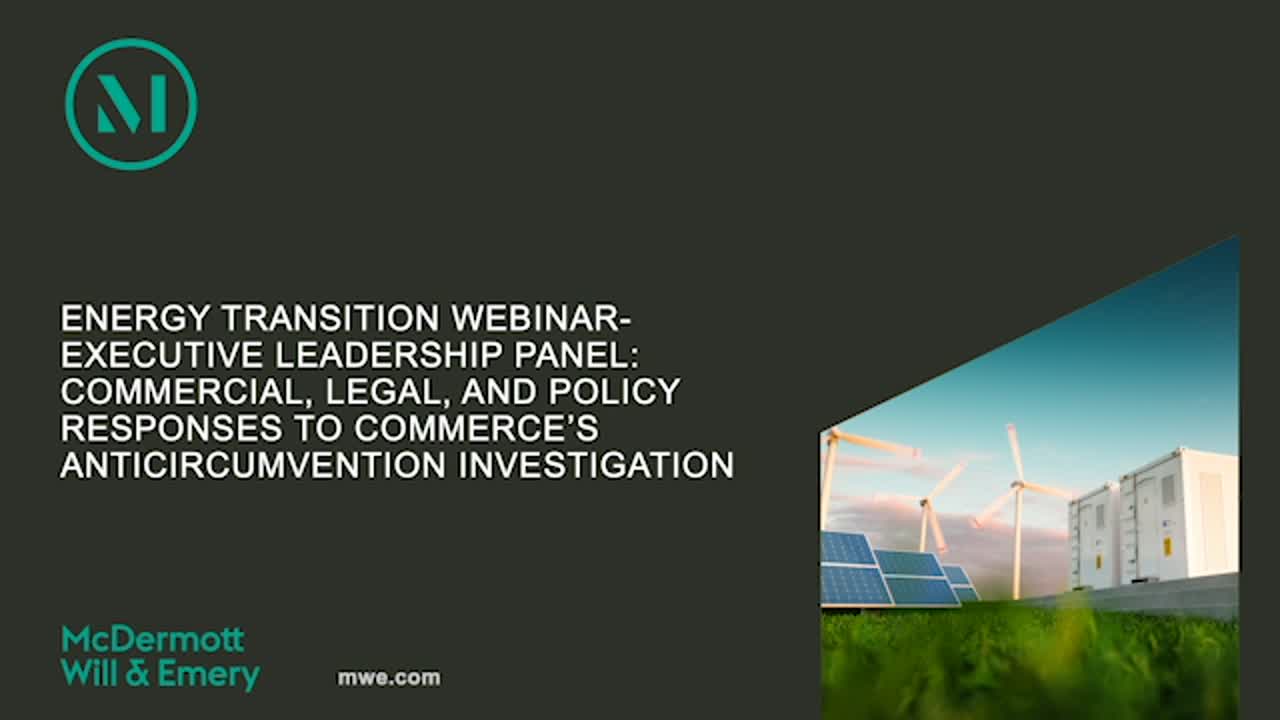
Below are key takeaways from the discussion:
1. Commerce’s decision to initiate a circumvention investigation into whether CSPs imported from Cambodia, Malaysia, Thailand or Vietnam are circumventing antidumping and countervailing duty orders on CSPs from China has generated market uncertainty for companies that import or rely on imported CSPs.
2. Whether any assessment of duties or penalties that result from the investigation will have retroactive effect is currently unclear. Applicable regulations do not require Commerce to apply duties retroactively, providing an opportunity for “interested parties” to offer feedback to Commerce as to why retroactive application would be unfair. (In this context, domestically, importers of record, businesses and trade associations and industrial users are generally recognized as interested parties.)
3. Major legal and factual issues may sway Commerce’s ultimate determination, while certain factual discrepancies in Auxin Solar Inc.’s petition to Commerce may lead to a preliminary decision by Commerce. (The deadline for the preliminary decision is August 29, 2022, and it’s unlikely that Commerce will act before this deadline.) Additionally, certain “country of origin” legal analyses are implicated in any ultimate determination Commerce makes.
4. Auxin’s petition and Commerce’s investigation have given more attention to the issue of importing CSPs and to the Build Back Better Plan (BBB), so there is optimism that this may push US Congress to act more quickly on the adoption of certain tax credits, domestic content credits and other incentives under the BBB.
To access past webinars in the Energy Transition series and to begin receiving Energy updates, including invitations to the webinar series, please click here.
read more

 Subscribe
Subscribe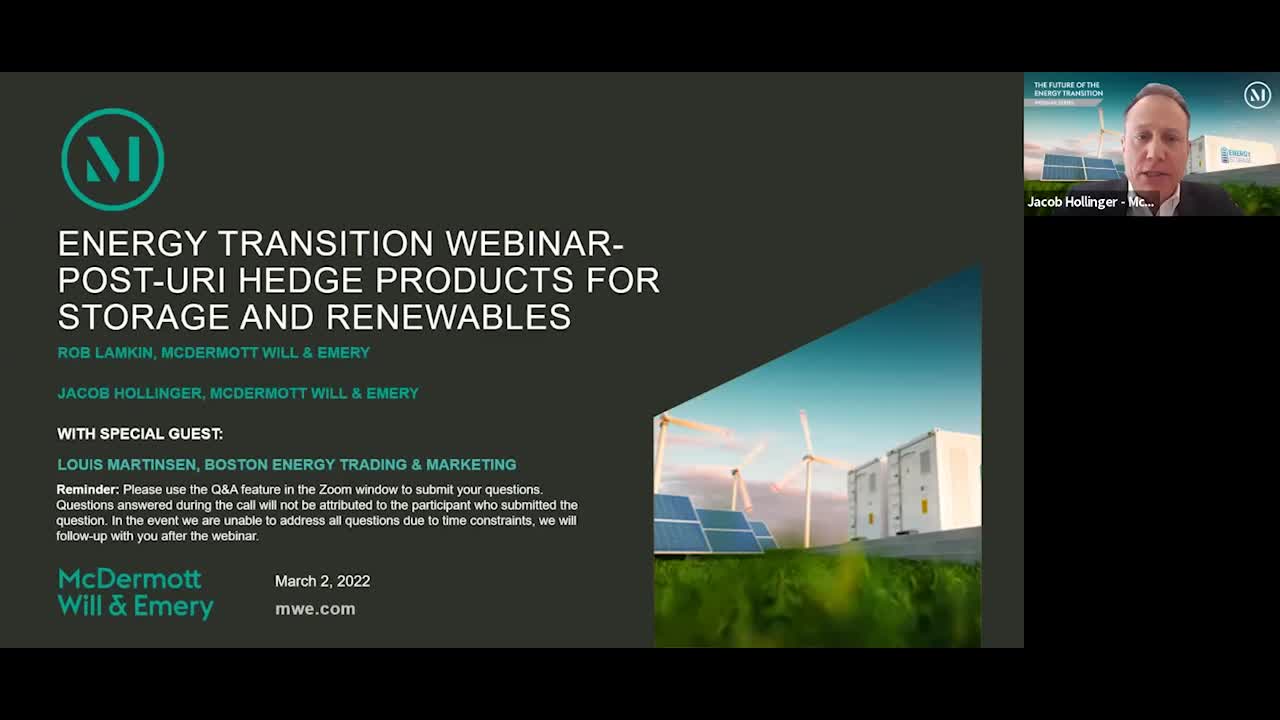

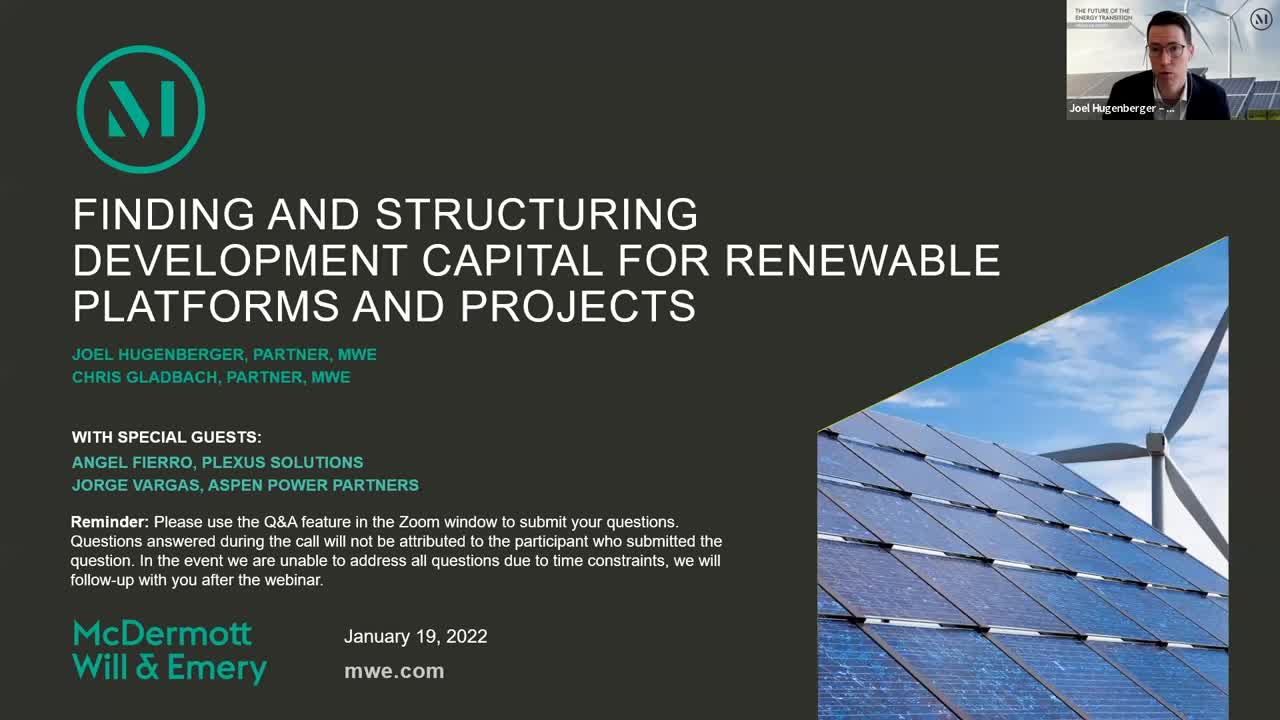

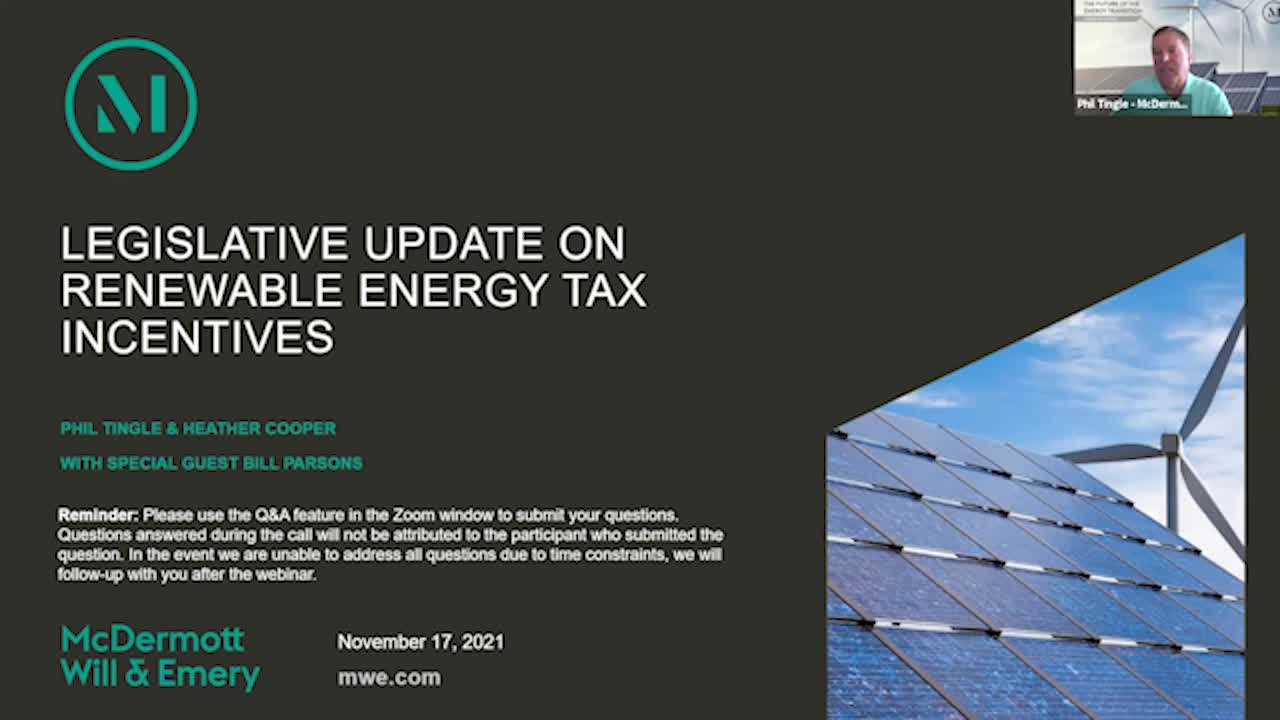
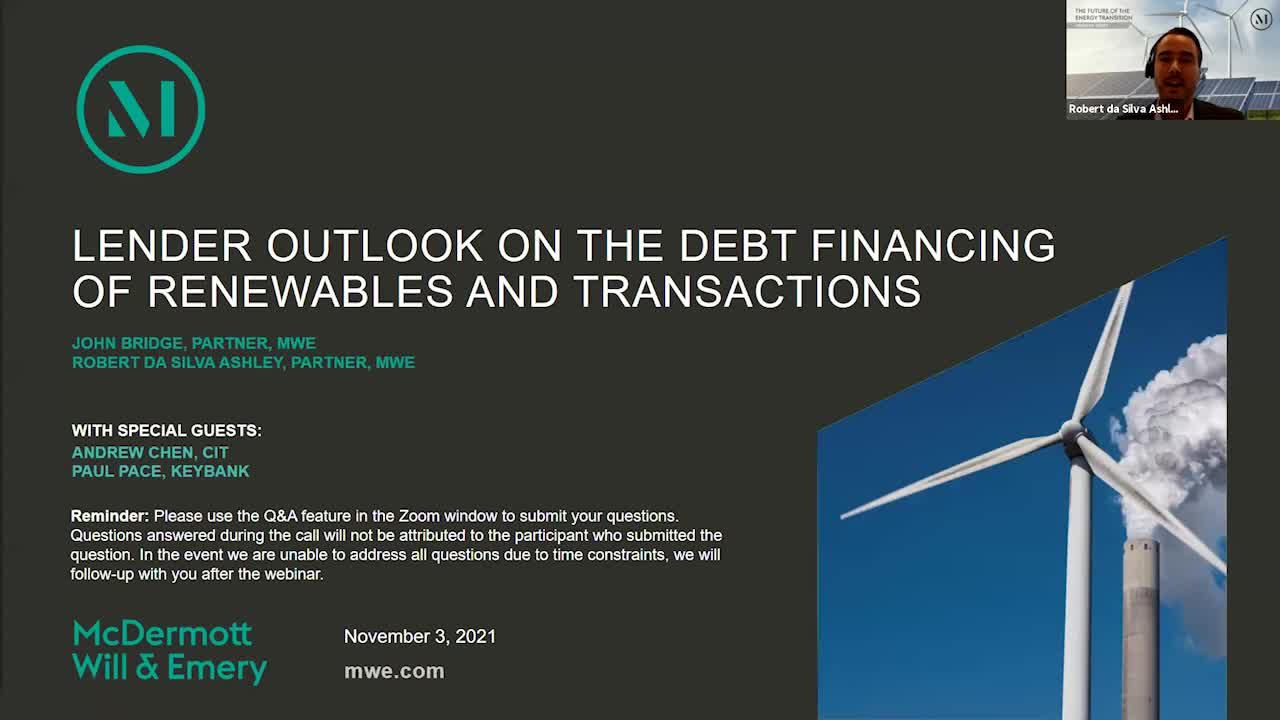
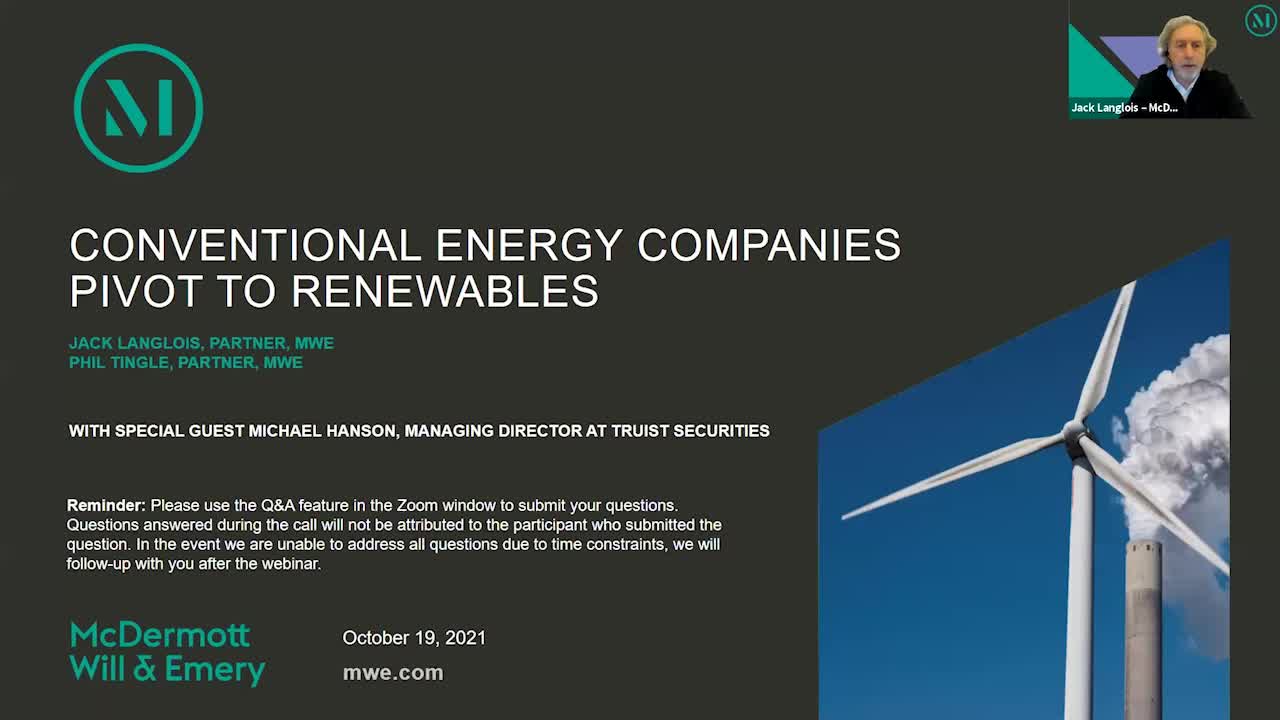
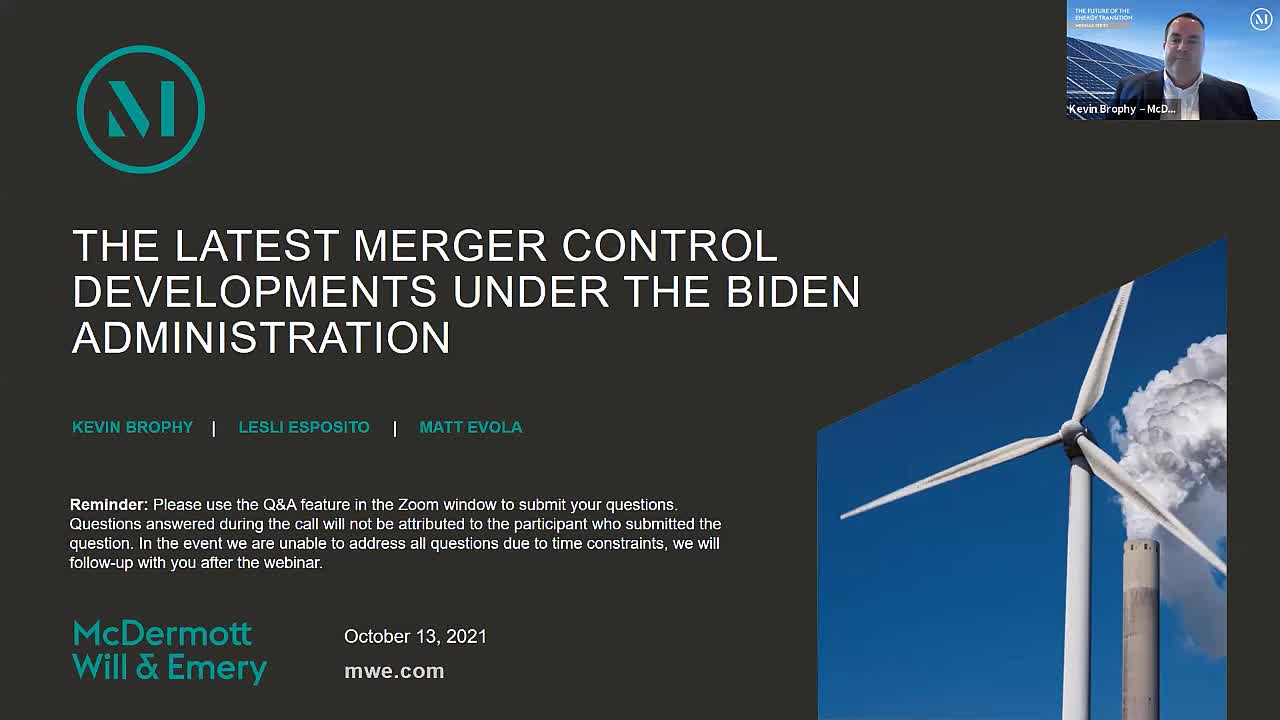 Below are key takeaways from the webinar: 1. Antitrust Agency Personnel Changes. The FTC and the DOJ Antitrust Division have recently seen leadership changes. At the FTC, US President Joe Biden appointed Lina Khan to chair, and she’s already making headlines for her efforts to “modernize” merger assessments. Chairwoman Khan has indicated that she wants the FTC to focus on addressing the “rampant consolidation” that has resulted in dominant firms across markets. She has also advocated for a holistic approach to identifying harms, a focus on power asymmetries and a need for the agency to be forward-looking. The changes she has implemented have significantly impacted merger review. At the DOJ, President Biden appointed Jonathan Kanter, who has not yet taken office but is also expected to take an aggressive approach to enforcement, to lead the Antitrust Division. 2. President Biden’s Executive Order on Antitrust. In a July executive order, President Biden indicated that antitrust enforcement would be a top priority for his administration. The order calls for a whole-of-government approach, encompassing 72 initiatives directed at more than 12 separate agencies. The order directed the FTC and the DOJ to vigorously enforce the antitrust laws by toughening the review of future mergers and revisiting anticompetitive mergers that went unchallenged. 3. Policy Changes with Practical Implications. The FTC has been especially active in announcing new policies and procedures that will likely extend the merger review timeline and open previously consummated transactions to further scrutiny. Among these changes are:
Below are key takeaways from the webinar: 1. Antitrust Agency Personnel Changes. The FTC and the DOJ Antitrust Division have recently seen leadership changes. At the FTC, US President Joe Biden appointed Lina Khan to chair, and she’s already making headlines for her efforts to “modernize” merger assessments. Chairwoman Khan has indicated that she wants the FTC to focus on addressing the “rampant consolidation” that has resulted in dominant firms across markets. She has also advocated for a holistic approach to identifying harms, a focus on power asymmetries and a need for the agency to be forward-looking. The changes she has implemented have significantly impacted merger review. At the DOJ, President Biden appointed Jonathan Kanter, who has not yet taken office but is also expected to take an aggressive approach to enforcement, to lead the Antitrust Division. 2. President Biden’s Executive Order on Antitrust. In a July executive order, President Biden indicated that antitrust enforcement would be a top priority for his administration. The order calls for a whole-of-government approach, encompassing 72 initiatives directed at more than 12 separate agencies. The order directed the FTC and the DOJ to vigorously enforce the antitrust laws by toughening the review of future mergers and revisiting anticompetitive mergers that went unchallenged. 3. Policy Changes with Practical Implications. The FTC has been especially active in announcing new policies and procedures that will likely extend the merger review timeline and open previously consummated transactions to further scrutiny. Among these changes are: